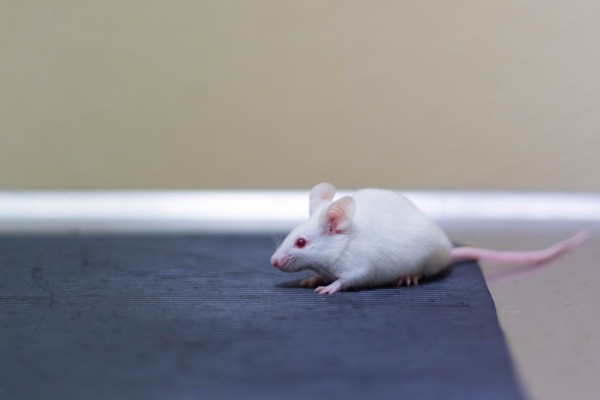Why Animal-Free Toxicity Testing Needs Exposure Science
8 years agoAt the end of last year, I received a joint email from Unilever’s Safety and Environmental Sustainability Sciences (SEAC) and the UK’s National Centre for the Replacement, Refinement and Reduction of Animals in Research (NC3R). They invited me to present some of the research of the Institute for Risk Assessment Sciences (IRAS) dealing with how the exposure conditions in an in vitro cell-based toxicity assay affect predictions of in vivo safe exposure levels. This presentation would be one of many given over a two-day period on research dealing with how exposure science can improve the regulatory acceptance of non-animal approaches to safety testing.
The invitation was both an honour and a stark reminder that the use of exposure science, the study of characterizing the extent to which biomolecules to organisms to ecosystems are in contact with chemicals, is thus far poorly incorporated in in vitro approaches for safety assessment. That the NC3R and Unilever, jointly considered the issue pressing enough to warrant a workshop for the safety science community is exciting and encouraging.
Stimulating setting
On February 15th, I took a very early morning flight to London and weaved myself through the daily stream of London commuters to the Royal College of Obstetrics and Gynaecology, a grand old building overlooking Regent Park. And joined the line-up of what proved to be a very impressive list of presenters. What was most striking was the organisers’ ability to pick speakers from research areas of exposure science who otherwise would not meet: pharmaceutical sciences, environmental chemistry, toxicological sciences and regulatory toxicology. By bringing together representatives of regulators, industry and academia in a friendly, stimulating setting, the organisers provided the first essential step to meeting the goal of a better uptake of non-animal approaches in safety testing by incorporating exposure science knowledge and tools.
Talks
Each talk given at the workshop on ‘Applying exposure science to increase the safety of non-animal data in efficacy and safety testing’ merits a summary here, but space, as anywhere, is a scarce commodity. Hence, my undoubtedly unsatisfactory few highlights follow. Professor Alan Boobis, the well-respected professor of pharmacology at Imperial College London, chaired the meeting, introduced each speaker and asked pointed questions to effectively prompt a discussion with the audience.
Both Professor George Loizou at the UK’s Health and Safety Laboratory, Dr. Iain Gardner of Certara and the SimCyp Consortium, explained, through helpful animations, how their respective physiologically based pharmacokinetic (PBPK) models can be used to translate in vitro effect concentrations to human relevant doses and vice versa.
Dr. Barabara Wetmore from the US Environmental Protection Agency (EPA) topped-up these presentations with very clear examples of how these exposure models in combination with in vitro data inform risk assessors at the EPA of the risks of industrial chemicals in its ToxCast programme.
PBPK models are traditionally toys for pharmacologists. Dr. Roman Ashauer from the University of York provided an alternative take on how exposure modelling can be used to inform non-animal based risk assessment, a take from ecotoxicology. He explained the ins and outs of toxicokinetics/toxicodynamics (TK/TD) models. These models have been used to mechanistically explain sensitivity differences in toxicity between species and can be extended to explain differences in effects between in vitro assays.
Professor Gareth Jenkins of Swansea University and Professor Philipp Mayer from the Technical University of Denmark then described a measurement tool, referred to as passive dosing, to dose in vitro assays to maintain exposure conditions in these assays constant, avoiding the loss of chemicals through evaporation and plastic binding in these assays.
Both Dr. Alicia Paini from the European Commission’s Joint Research Council and Dr. Nicole Kleinstreuer from the US NICEATM then explained how regulatory agencies foresee the use of exposure tools to inform risk assessment, thus providing a blue print for researchers in exposure science to develop their tools for use in risk assessment.
Other than providing a network for scientists in exposure and in vitro toxicology to integrate their science for the regulatory uptake of non-animal data in safety testing, the workshop organisers divided all attendees into three breakout groups to discuss why the uptake of exposure science into non-animal approaches for safety testing has been poor and what can be done to integrate the fields more effectively. At the end of the brainstorm sessions, rapporteurs reported the main findings.
Hurdles and opportunities
It was exciting to see that the hurdles and opportunities for exposure science identified by the three breakout groups were similar. The NC3R team is now writing a report with the main findings for wider dissemination. In short, it will state that the active involvement of regulators, industry and a multidisciplinary team of exposure scientists, modellers and in vitro toxicologists should be a prerequisite for new research projects aimed at developing 3R approaches for safety testing.
Moreover, an inclusive, easily accessible platform to bring together these scientists is useful and the NC3R will help develop this. Next, a guidance document of exposure considerations which should be addressed by scientists publishing new non-animal methods for safety testing should be setup and upheld by journal editors.
And, lastly, transparency and consistency of reporting exposure models and data were identified as essential to overcome the challenges and barriers to regulatory acceptance of exposure-driven approaches.
Nynke I. Kramer


